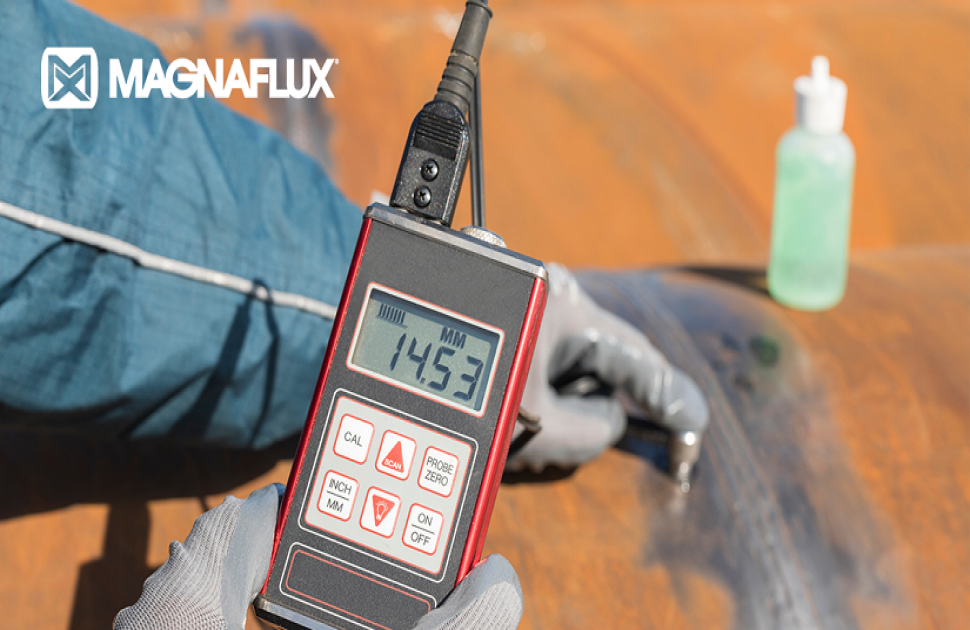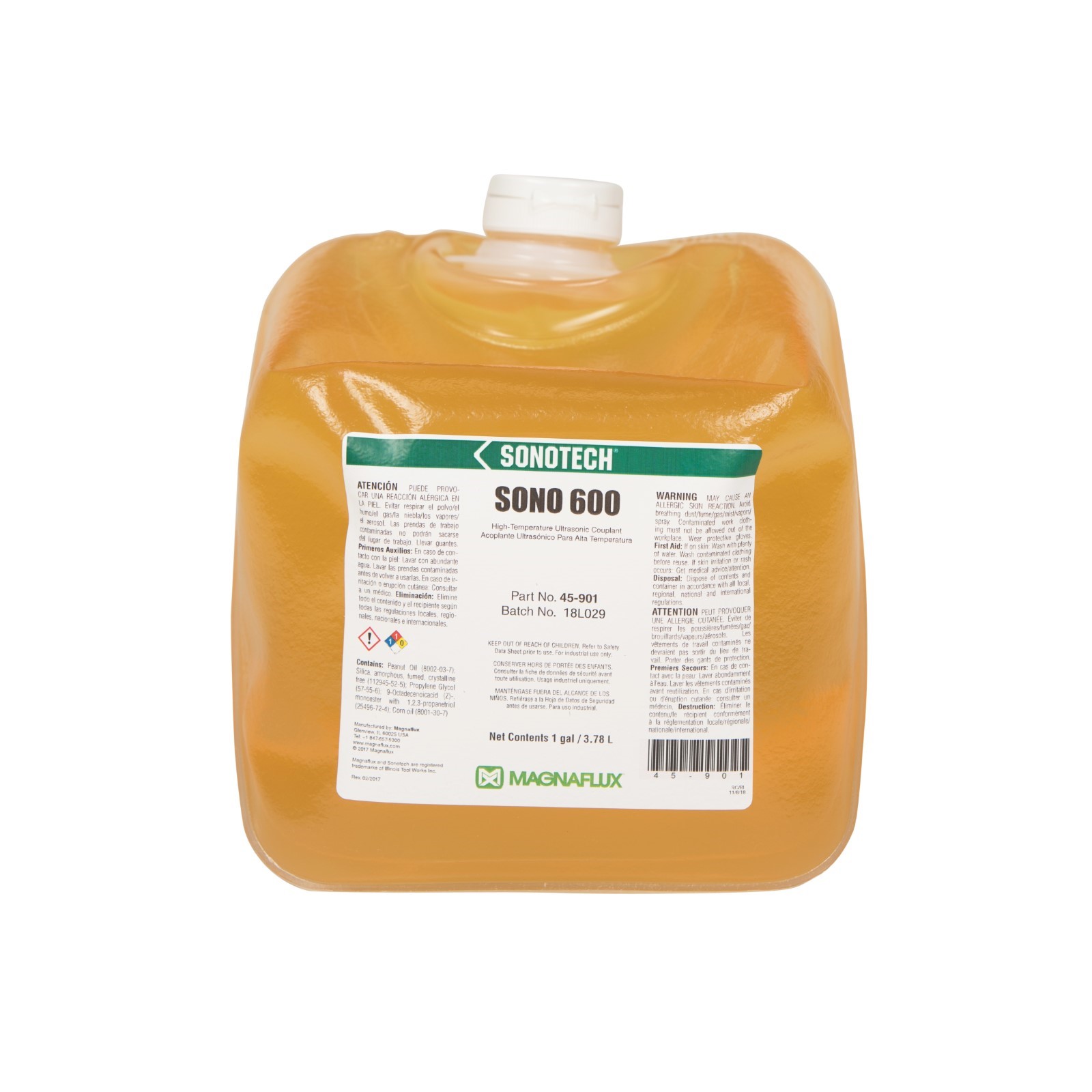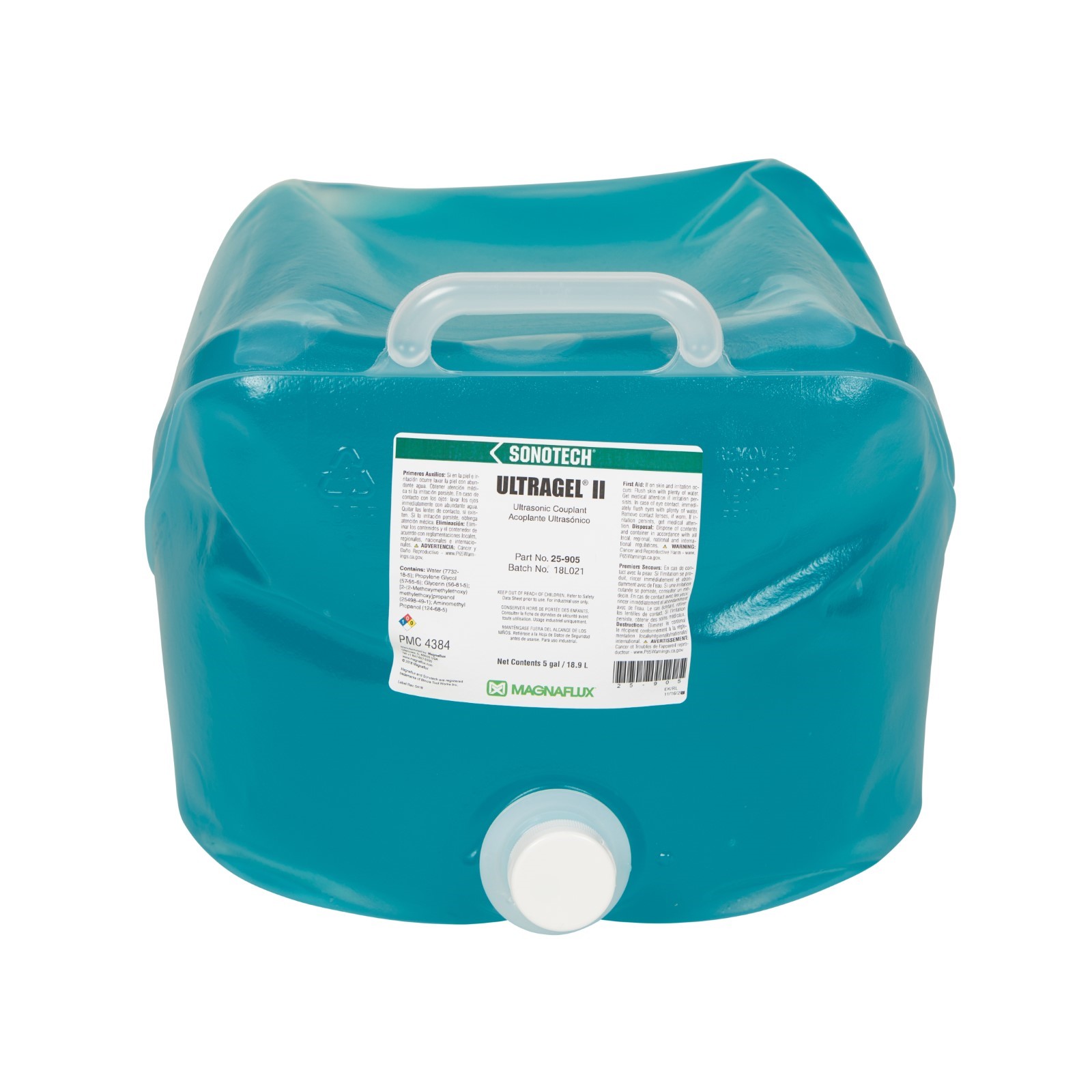NDT-approved couplants are preferred to ensure that testing meets specification conformance requirements, as well as compatibility and corrosion protection needs.
Why use an NDT couplant?
Ultrasonic testing involves imparting ultrasonic energy from a transducer into a part and back to assess the integrity of that part. Ultrasonic energy does not travel very well through air, so if there is air between the transducer and the part, very little energy is transferred and poor readings result.
- Couplants fill in the gaps, eliminating the air in the space between the part and the transducer, and transmitting more ultrasonic energy into and out of the part.
- The surface texture of the part is important, as rough part surfaces tend to have more spaces for air to exist between the part and the transducer, and therefore have even greater need for a couplant to be used.
Magnaflux couplants are formulated and approved for use in NDT applications, with multiple options available to fill in gaps on various part surfaces and under different conditions. View the Industrial Ultrasonic Couplant Comparison guide here.
Specification Conformance & Material Compatibility
Regulatory bodies require meeting certain specifications in order to do work in particular fields, such as aerospace and oil and gas. These include ASTM, ASME, API, AWS, and various OEM specifications. Many specifications limit halogen and sulfur content allowed within a couplant.
If a couplant does not meet these specifications, you cannot do work within particular fields or for customers that require these specifications to be met.
Depending on the materials involved in testing, corrosion protection can be a factor as well, particularly for sensitive alloys and long-term testing.
Industry-standard testing is in place for assessing corrosion protection under elevated temperatures.
Ultragel II and Sono 600 offer excellent long-term corrosion protection, and Ultragel II are approved to many industry and OEM specifications. All Magnaflux couplants products are also tested for halogens and sulfur content on every single batch.
Temperature Range
When working in high temperatures, couplants must remain stable in order to perform properly and ensure safety of the testing environment. The operating temperature range of a couplant is important to consider, particularly when testing hot parts.
Certain couplants are specifically designed to work in higher temperature ranges. Temperature stability can be found on the documentation for a particular couplant, and can be found by referring to the PDS or the Magnaflux website.
| General Purpose | High Temperature | ||||||
|
| ||||||
| Ultragel II | operating at –10°F (-23°C) to 210°F (98°C) | Sono 600 operating at 0°F (-17°C) to 700°F (371°C) | |||||
| Europe Product Page | Europe Product Page | North America Product Page |
Viscosity & Coverage
Couplants can be thin liquids, thick gels, or somewhere in between. This is achieved through modification of the couplant formulation to deliver the desired viscosity. Viscosity is important in determining the coverage a couplant achieves depending on the type of part you are testing and its surface texture – rough parts may require a more viscous material to ensure coverage, while smooth parts can be covered well with thinner couplants. It can also depend on the location of the testing – testing on vertical surfaces or an overhang requires a high viscosity couplant in order to ensure the material stays in place on the part in the desired testing location.
Viscosities are typically measured in centipoise (cP), although testing methodologies can vary widely, so obtaining relative viscosity information can be valuable in determining the appropriate couplant for your application.
Ultragel II is a medium viscosity gel (80,000 cP) and is good for general purpose applications, while Sono 600 is a much higher viscosity gel (500,000 cP).
Dry time
Couplants will not function properly in transmitting energy once they are dry. Slower drying couplants reduce material usage, speed up processing, and are critical for longer term testing.
Some couplants dry out as you are conducting the test and moving the transducer over the part, negatively impacting readouts and ease of inspection.
Ultragel II has humectants to slow the dry time and avoid issues of dry out or signal dropout. Oil-based couplants, such as Sono 600, provide a similarly consistent signal transmission throughout the inspection.
Source: https://www.magnaflux.com/Magnaflux/Resources/Blog/Performance-Factors-Ultrasonic











